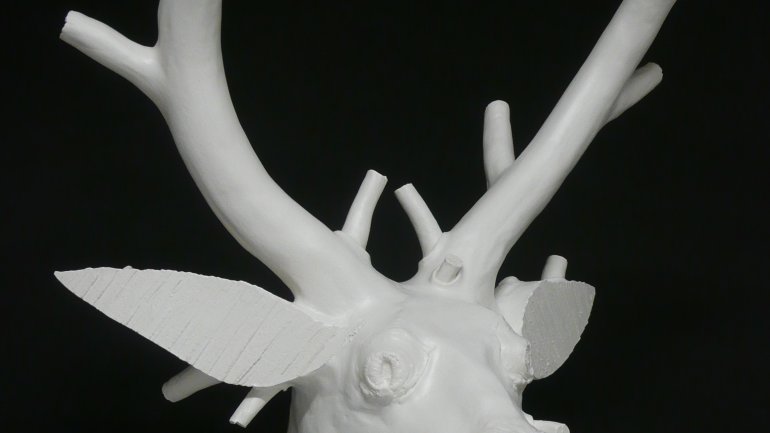Jeff Irwin: Nature as Trophy
Jeff Irwin: Nature as Trophy
Jeff Irwin: Nature as Trophy
Earl & Birdie Taylor/Pacific Beach Branch Library
San Diego, CA
Sept. 13 - Nov. 22, 200
Denaturing carries a connotation of loss, the removal or compromise of something essential. Strictly defined, however, to denature means to change the properties of a thing, and that process might be transformative in a positive way. Jeff Irwin's compelling ceramic sculptures of the past several years engage both aspects of such change-the tragic and the catalytic, the sacrificial and the spectacular.
Most of the work in this memorable show took the form of wall-mounted animal heads, akin to the taxidermied trophies of a successful hunt. Irwin sculpts the figures (antelope, elephant, cougar and more) to look as if they were made of tree branches, with knobby knots for eyes and sawed-off twigs for mouths and ears. Glazed an allover, milky white, the pieces have a formidable, ghostly presence, the clay magnificently denatured to resemble not just wood but smooth, fossilized bone. The works bear witness to the human impulse toward conquest and exploitation, the ego-centered drive to capture and display, to turn nature into a prize.
In spite of this mournful undercurrent, the show is spiked with humor and clever visual/verbal double entendres.
Fish Stick is both of its title nouns and neither, a meticulously crafted work of clay masquerading as a curved branch posing as an animate creature. Yogi With Begging Bowl conflates cartoon bear with Buddhist monk. Irwin plays smartly with our habit of anthropomorphizing animals. A rabbit figure on a pedestal (itself clay mimicking wood) has vaguely human features and stands with one front leg raised as if in greeting, like the sustained wave of a politician. Mostly, though, their bluntly flattened mouths give these emissaries from the wild the discomfiting look of being silenced.
In a smaller selection of wall-mounted tile grids with applied imagery, Irwin layers the warm, sepia tones of old photographs with the graphic punch of black-and-white woodcuts. Here, too, in faux wood-grain frames and references to both pure and processed nature, he practices one marvelous type of denaturing while lamenting another.
Leah Ollman is a San Diego-based writer for the Los Angeles Times.




